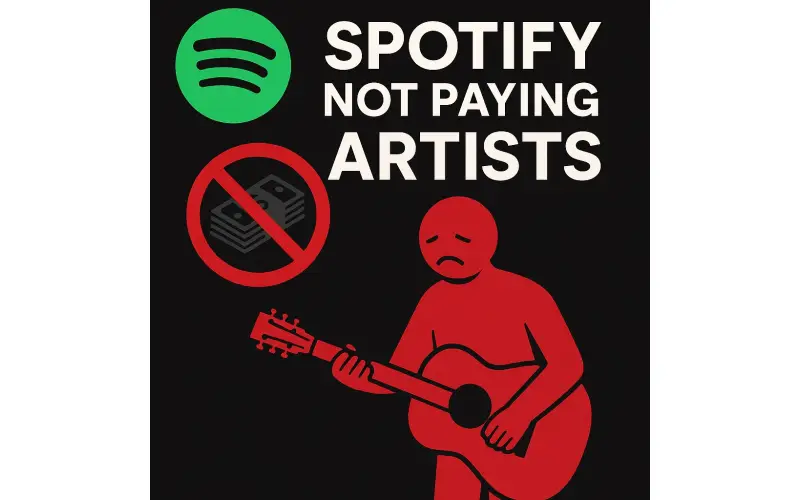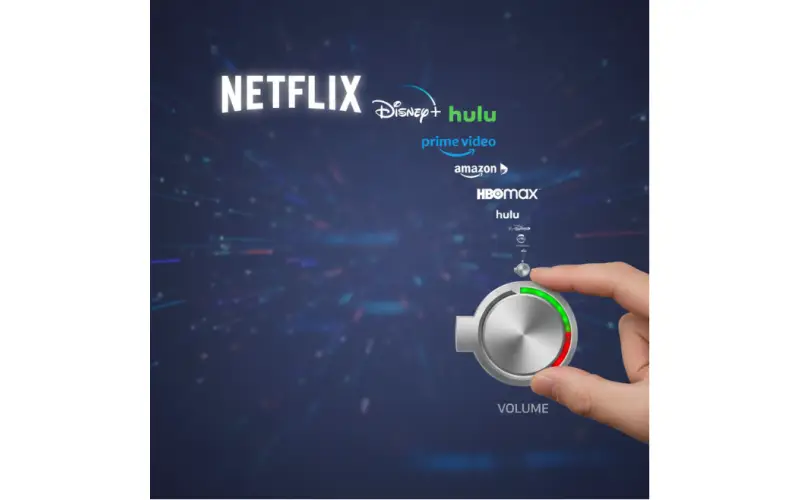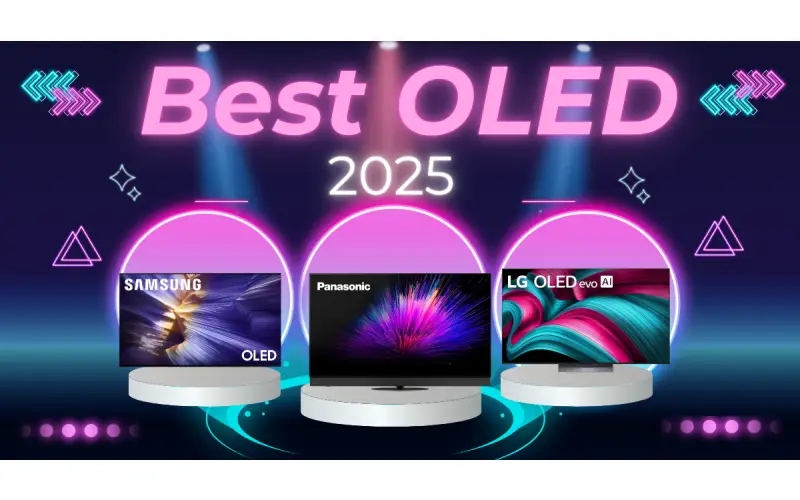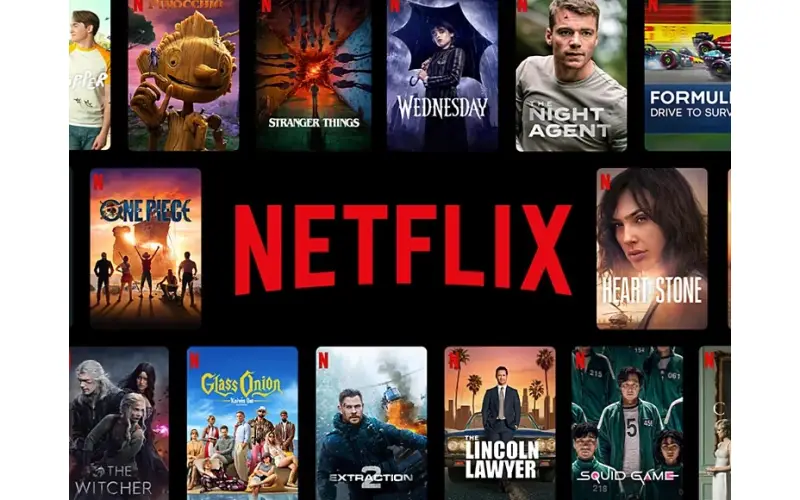By: Dipin Sehdev
In the algorithmic age of digital music, Spotify—the world’s dominant streaming service—has built its empire not just on music discovery or user-friendly design, but on something far murkier: manipulating its own playlists to avoid paying real artists what they’re due. This isn’t just a story of corporate greed; it’s a cautionary tale about the commodification of music, the exploitation of creators, and how platforms we once trusted to democratize sound have instead buried the very voices that defined their success.
I personally canceled my Spotify subscription back in 2017, long before much of this was public knowledge. Even then, it was clear to me that Spotify was moving in a direction that prioritized profit over artistry. Today, I use Apple Music on the go and rely on Roon paired with Qobuz at home—services that at least make an effort to present music as a craft, not just as data points to be optimized.
Now, with the publication of Liz Pelly’s new book, Mood Machine: The Rise of Spotify and the Costs of the Perfect Playlist (available here on Amazon), the curtain is being pulled back on just how calculated Spotify’s strategy has become. Pelly details a secret internal program known as “Perfect Fit Content” (PFC), a scheme reportedly designed to replace real musicians with faceless, low-cost productions that Spotify can license more cheaply—or worse, commission outright without any ongoing royalty commitments.
Let’s be clear: this isn’t just about ambient playlists or background noise. This is a direct attack on the livelihoods of working artists, composers, and producers. And it’s happening at the heart of the most popular streaming platform on the planet.
The Ghost in the Playlist
According to Pelly’s investigation, PFC began as early as 2010 and was fully operational by 2017, the same year I abandoned ship. The goal of the program was chilling in its simplicity: fill Spotify’s editorial playlists—the most coveted promotional real estate on the platform—with tracks that don’t require Spotify to pay traditional royalties. The result? Millions of streams rerouted away from legitimate musicians and toward content designed explicitly to reduce costs.
Employees interviewed in the book describe a creeping shift in culture, where Spotify began encouraging its editorial team to include PFC tracks in major playlists. These weren’t artist submissions or new discoveries—they were commissioned works, often composed by anonymous or pseudonymous creators hired through third-party firms. As one ex-employee put it, “It’s just not fair.”
It gets worse. Playlist editors were reportedly shown a new internal metric that calculated not just a track’s popularity, but how it aligned with Spotify’s financial interests. This metric included how well a playlist performed when filled with “music commissioned to fit a certain playlist/mood with improved margins.” In other words: how profitable the music was—not for the artists, but for Spotify.
If you’re wondering how this fits into Spotify’s long-standing denial of in-house music creation, CEO Daniel Ek himself muddied the waters earlier this year when he tweeted that “the cost of creating content is close to zero.” That’s a stunning admission from someone claiming not to produce music.
Commodifying Creativity
Let’s not mince words: Spotify is actively replacing artistry with algorithmic filler. The music placed into its top playlists—titles like “Deep Focus,” “Cocktail Jazz,” and “Morning Stretch”—isn’t there because it resonates emotionally, challenges convention, or inspires thought. It’s there because it’s cheap. Because it doesn’t require long-term payouts. Because it can be engineered, reproduced, and forgotten—only to be replaced by another track in the same style, under another invented name.
This is music stripped of identity. It’s soulless, contextless, and anonymous by design.
Consider the case of a jazz musician interviewed by Pelly. He was offered a few hundred dollars to produce ambient tracks for one of Spotify’s affiliated PFC vendors. No royalties. No rights to the master recordings. Just a flat fee and a request to remain anonymous. He agreed, thinking it was a side gig. But when those tracks racked up millions of streams, it hit him: he’d sold off his intellectual property for peanuts, while Spotify profited in perpetuity.
This is not just an exploitative business model. It’s a betrayal of the foundational promise of streaming: that it would empower artists to reach audiences directly and earn a living from their work.
Buried by the Algorithm
In the world Spotify has created, it’s not just that real artists are underpaid—it’s that they’re actively hidden. Every time a ghost artist is placed into a playlist in lieu of a real one, it’s one fewer opportunity for an up-and-coming singer-songwriter, jazz composer, or ambient producer to be heard. Spotify has taken the very mechanism that once helped unknown talent break through—the curated playlist—and turned it into a revenue-optimization tool that sidelines actual creators.
The problem is systemic. Spotify’s “Discovery Mode,” which came under fire earlier this year, allowed artists to promote their songs in exchange for a 30% cut in royalties. That’s not promotion; that’s a shakedown. And now, with PFC in the mix, even that meager path to discovery is compromised.
It’s no longer just about low pay—it’s about invisibility.
And let’s be real: Spotify has never been a champion for artist compensation. The platform famously pays fractions of a cent per stream. For an independent artist to make even minimum wage from Spotify, they’d need millions of streams per year. Most don't come close. And now we know why: they’re being quietly replaced.
A Race to the Bottom
Some have argued that Spotify’s embrace of ghost artists is no different from a film studio using stock music for a trailer. But that’s not an honest comparison. Spotify isn’t selling ads or trailers—it’s selling music. And it built its brand on the backs of real musicians who trusted the platform to treat them fairly.
This move toward PFC content is just another step in a race to the bottom—a race where music becomes mere background noise, where creators are devalued, and where user engagement is measured not in joy or connection, but in raw minutes streamed.
Worse still, it sets a precedent. If Spotify succeeds in replacing significant portions of its catalog with ghost artists, what’s to stop Apple, Amazon, or YouTube from doing the same? The streaming wars have always been cutthroat, but this is a scorched-earth tactic. It benefits no one but shareholders.
Why I Walked Away
I canceled Spotify in 2017 for a mix of personal and philosophical reasons, but looking back, it feels almost prophetic. Even then, it was clear the company viewed music as a commodity, not a culture. The endless tweaks to the UI, the push toward mood-based listening over album experiences, the growing disconnect between what was popular and what was actually good—it all pointed to a service more interested in engineering attention than nurturing creativity.
Today, I use Apple Music while on the move. It’s not perfect, but it gives me access to high-quality files, a solid library, and integration with my broader Apple ecosystem. At home, though, I get serious. I use Roon with Qobuz, which offers high-resolution audio, a real sense of context around albums and artists, and—crucially—fairer compensation for the people who make the music I love.
And I’m not alone. A growing number of music lovers, audiophiles, and even casual listeners are waking up to the limitations—and the ethical rot—of Spotify’s model. Social media is awash with users deleting their accounts and calling out the company’s exploitative practices. The more we learn about Spotify’s internal operations, the clearer it becomes: this platform is not the future of music. It’s a warning about what happens when data replaces taste, and cost-cutting replaces care.
The Bottom Line
Spotify wants to be everything: your DJ, your radio, your record store, your chill-out companion. But when it starts producing fake artists to dodge royalties, it crosses a line. It’s not just gaming the system—it’s rewriting it in its favor, leaving real musicians in the dust.
This isn’t sustainable. Not for the artists, not for the fans, and ultimately, not even for Spotify. Because no matter how many ghost tracks it sneaks onto its playlists, it can’t replicate what makes music matter: emotion, truth, and human connection.
If you care about music—really care—then you have to ask yourself: is this the platform you want to support? Or is it time to tune out the algorithm and turn up something real?
Source: Futurism





